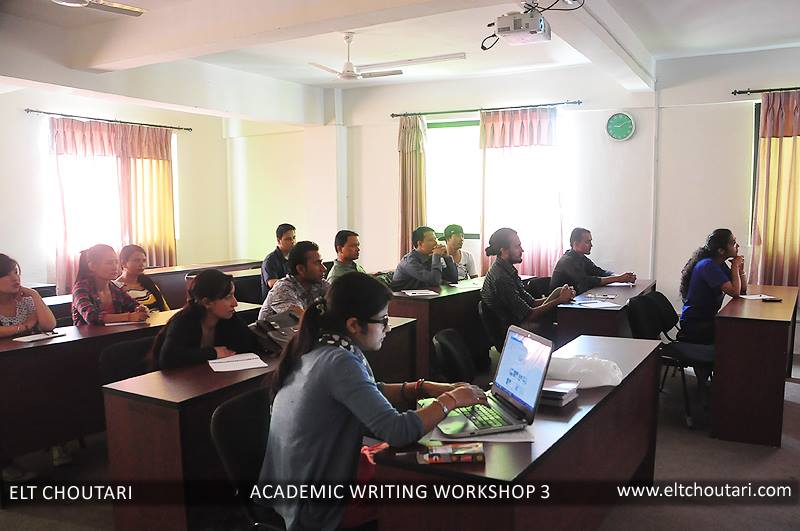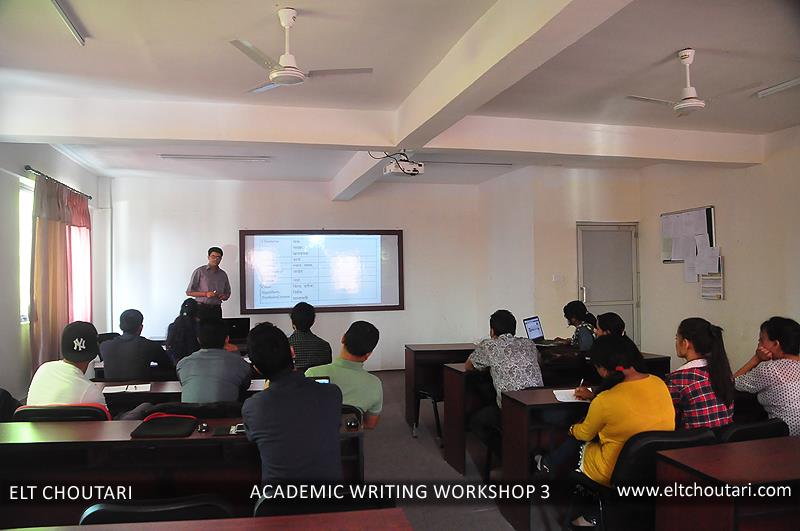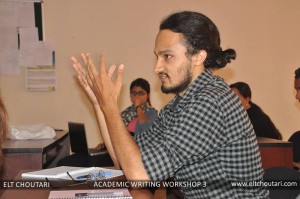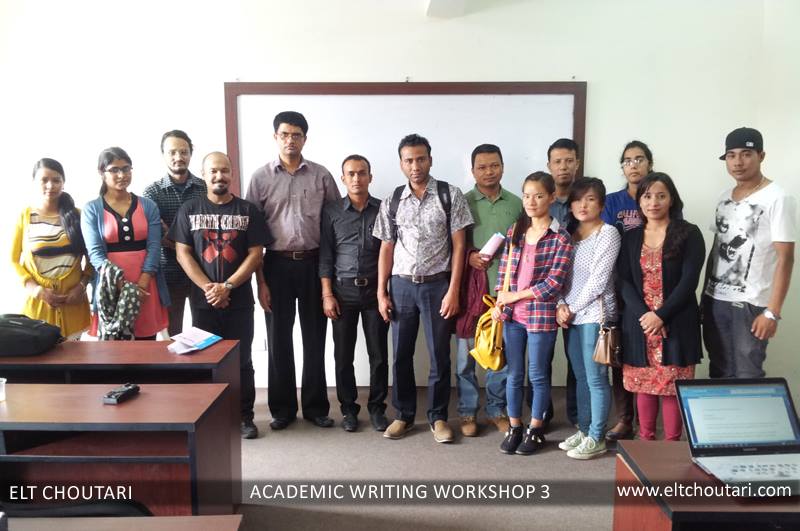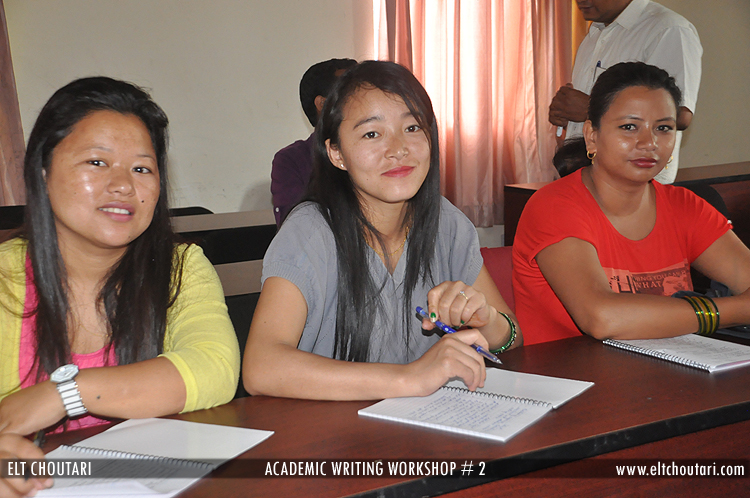Alan Maley
U.K.
Why is it that most institutional systems of education develop such narrow and unadventurous teaching procedures? How is it that joyful learning somehow gets overwhelmed by institutional rituals: the worship of the syllabus, the obsession with ‘covering’ the textbook, the manic preoccupation with the exam, the compulsion to conform? It seems that only in rare cases, through the determination of individual teachers, is joyful learning achieved. In most other cases, the language is reduced to drumming in material as if it were a set of mathematical formulae in preparation for the exam, after which it can safely be discarded. Small wonder that many students simply switch off and develop a lifelong aversion to the language in question. What they learn is neither enjoyable nor perceived as useful in the ‘real’ world outside the classroom.
This applies to much English language teaching too: all too often, it lacks a creative spark. John McRae goes so far as to say,
“In future years, the absence of imaginative content in language teaching will be considered to have marked a primitive stage of the discipline: the use of purely referential materials limits the learner’s imaginative involvement with the target language, and leads to a one-dimensional learning achievement. Representational materials make an appeal to the learner’s imagination…” (McRae 1991:vii)
In this article I shall be arguing for the need to develop more creative approaches to writing as a way of enriching the learning experiences of both teachers and learners.
What is Creative Writing?
Creative writing is often contrasted with Expository writing. I have summarized the principle differences between them in the following table:
| Expository Writing |
Creative Writing |
|
Instrumental
Facts
External control
Conventions
Logical
Analytical
Impersonal
Thinking mode
Appeal to the intellect
Avoidance of ambiguity
|
Aesthetic
Imagination
Internal discipline
Stretching rules
Intuitive
Associative
Personal
Feeling mode (plus thinking!)
Appeal to the senses
Creation of multiple meanings |
When writing an expository text we are essentially instrumentally motivated. We have a quantum of facts, ideas and opinions to put across. Expository writing rests on a framework of externally imposed rules and conventions. These range from grammatical and lexical accuracy and appropriacy to specific genre constraints. The aim of expository writing is to be logical, consistent and impersonal and to convey the content as unambiguously as possible to the reader.
Creative writing, by contrast, is aesthetically motivated. It deals less in facts than in the imaginative representation of emotions, events, characters and experience. Contrary to what many believe, creative writing is not about license. It is a highly disciplined activity. But the discipline is self-imposed: ‘the fascination of what’s difficult’ (Yeats). In this it stands in contrast to expository writing, which imposes constraints from without. It often proceeds by stretching the rules of the language to breaking point, testing how far it can go before the language breaks down under the strain of innovation. Creative writing is a personal activity, involving feeling. This is not to say that thought is absent – far from it. The ingenuity of a plot, or the intricate structure of a poem are not the products of an unthinking mind: they require a unique combination of thought and feeling – part of what Donald Davie (1994) calls ‘articulate energy.’ An important quality of creative writing however is the way it can evoke sensations. And, unlike expository writing, it can be read on many different levels and is open to multiple interpretations.
The Case for Creative Writing.
It is reasonable to ask however, how we can justify the inclusion of creative writing, in addition to aesthetic reading, in our language teaching practices. A recent small-scale survey (unpublished data) I conducted among some 50 leading ELT professionals, especially teachers of writing, yielded the following reasons:
1. Creative writing aids language development at all levels: grammar, vocabulary, phonology and discourse. As learners manipulate the language in interesting and demanding ways, attempting to express uniquely personal meanings (as they do in creative writing), they necessarily engage with the language at a deeper level of processing than with expository texts (Craik and Lockhart 1972). The gains in grammatical accuracy, appropriacy and originality of lexical choice, and sensitivity to rhythm, rhyme, stress and intonation are significant.
2. Creative writing also fosters ‘playfulness’. In recent years there has been a resurgence of interest in the role of play in language acquisition. (Cook 2000, Crystal 1998) In some ways the ‘communicative movement’ has done a disservice to language teaching by its insistence on the exclusively communicative role played by language. The proponents of play point out, rightly, that in L1 acquisition, much of the language used by children is almost exclusively concerned with play: rhythmical chants and rhymes, word games, jokes and the like. Furthermore, such playfulness survives into adulthood, so that many social encounters are characterized by language play (puns, jokes, ‘funny voices’, metathesis, and so on) rather than by the direct communication of messages. In creative writing, learners are encouraged to do precisely this: to play creatively with the language in a guilt-free environment. As Crystal states, ‘Reading and writing do not have to be a prison house. Release is possible. And maybe language play can provide the key.’ (Crystal 1998:217)
3. This playful element encourages learners to take risks with the language, to explore it without fear of reproof. By manipulating the language in this way, they also begin to discover things not only about the language but about themselves. They effectively begin to develop a ‘second language personality’.
4. Much of the teaching we do draws and focuses on the left side of the brain, where our logical faculties are said to reside. Creative writing puts the emphasis on the right side of the brain, with a focus on feelings, physical sensations, intuition, and the like. This is a healthy restoration of balance between the logical and the intuitive faculties. It also allows scope for learners whose hemisphere preference or dominance may not be left-brain, and who, in the usual course of teaching, are therefore at a disadvantage.
5. The dramatic increase in self-confidence and self-esteem which creative writing tends to develop among learners leads to a corresponding increase in motivation. Dornyei (2001), among others, has pointed to evidence that suggests that among the key conditions for promoting motivation are:
‘5. Create a pleasant and supportive atmosphere in the classroom
6. Promote the development of group cohesiveness.
13. Increase the students’ expectancy of success in particular tasks and in learning in
general.
17. Make learning more stimulating and enjoyable by breaking the monotony of
classroom events.
18. Make learning stimulating and enjoyable for the learner by increasing the
attractiveness of tasks.
19. Make learning stimulating and enjoyable for the learners by enlisting them as active
task participants.
20. Present and administer tasks in a motivating way.
23. Provide students with regular experiences of success.
24. Build your learners’ confidence by providing regular encouragement.
28. Increase student motivation by promoting cooperation among the learners.
29. Increase student motivation by actively promoting learner autonomy.
33. Increase learner satisfaction.
34. Offer rewards in a motivational manner.’(Dornyei 2001: 138-144)
All these conditions are met in a well-run creative writing class. This increase in motivation is certainly supported by my own experience in teaching creative writing. Learners suddenly realize that they can write something in the foreign language which no one else has ever written before. And they experience not only a pride in their own products but a joy in the process.
6. Creative writing also feeds into more creative reading. It is as if, by getting inside the process of creating the text, learners come to intuitively understand how such texts work, and this makes them easier to read. Likewise, the development of aesthetic reading skills provides the learner with a better understanding of textual construction, and this feeds into their writing. There is only one thing better than reading a lot for developing writing ~ and that is writing a lot too!
7. Finally, the respondents to the questionnaire survey were almost unanimous in agreeing that creative writing helps to improve expository writing too. In fact, by helping learners to develop an individual voice, it makes their factual writing more genuinely expressive.
All of the above factors were mentioned by the respondents to the questionnaire. Respondents noted that students who become engaged in CW tasks demonstrate a robust sense of self-esteem and are consequently better motivated (Dornyei 2001). They also become more aware both of the language and of themselves as learners. The virtuous cycle of success breeding more success is evident with such students. As they become more self-confident, so they are prepared to invest more of themselves in these creative writing tasks. Above all, students derive not just ‘fun’ but a deeper sense of enjoyment from their writing.
References
Arnold, Jane. (1999). Affect in Language Learning. Cambridge: CambridgeUniversity Press.
Boden, Margaret. (1998) The Creative Mind. London: Abacus.
Carter, Ronald. (2004) Language and Creativity: the art of common talk. London: Routledge.
Cook, Guy. (2000) Language Play: Language Learning. Oxford: OxfordUniversity Press.
Craik, F.I.M. and R.S. Lockhart (1972) ‘Levels of processing: a framework for memory research.’ Journal for verbal learning and Verbal Behaviour II: 617-84.
Crystal, David. (1998) Language Play. London: Penguin.
Davie, Donald (1994) Purity of Diction in English Verse and Articulate Energy. London: Carcanet.
Day, Richard and Julian Bamford. (1998) Extensive Reading in the Second Language Classroom. Cambridge: CambridgeUniversity Press
Dornyei ,Zoltan (2001) Motivational Strategies in the Language Classroom. Cambridge: CambridgeUniversity Press.
Gardner, Howard. (1985) Frames of Mind. London: Paladin Books
Gleick, James. (1988) Chaos. London: Sphere Books
Koch, Kenneth. (1990) Rose, where did you get that red? New York: Vintage Books.
Krashen, Stephen (2004 second edition) The Power of Reading. PortsmouthNH: Heinemann
Maley, Alan (ed) (2007 a)) Asian Short Stories for Young Readers. Vol. 4. Petaling Jaya: Pearson/Longman Malaysia
Maley, Alan (ed) (2007 b)) Asian Poems for Young Readers. Vol.5. Petaling Jaya:Pearson/Longman Malaysia.
Maley, Alan and Jayakaran Mukundan. (eds) (2005 a)) Asian Stories for Young Readers, Vol 1 Petaling Jaya: Pearson/Longman Malaysia.
Maley, Alan and Jayakaran Mukundan (eds) (2005 b)) Asian Stories for Young Learners. Vol. 2 Petaling Jaya: Pearson Malaysia
Maley, Alan and Jayakaran Mukundan (eds) (2005 c) Asian Poems for Young Readers.Vol. 3. Petaling Jaya: Pearson/Longman.
Maley, Alan and Jayakaran Mukundan (eds) (2011a)) Asian Short Stories for Young Readers. Petaling Jaya: Pearson Malaysia
Maley, Alan and Jayakaran Mukundan (eds) (2011 b)) Asian Poems for Young Readers. Petaling Jaya: Pearson Malaysia.
Maley, Alan and Jayakaran Mukundan (2011 c)) Writing Poems: a resource book for teachers of English. Petaling Jaya: Pearson Malaysia
Maley, Alan and Jayakaran Mukundan (2011 d)) Writing Stories; a resource book for teachers of English. Petaling Jaya: Pearson Mal.aysia
McRae, John (1991) Literature with a Small ‘l’. Oxford.: Macmillan.
Matthews, Paul. 1994. Sing Me the Creation. Stroud:Hawthorn Press.
Mukundan, Jayakaran. (ed) (2006) Creative Writing in EFL/ESL Classrooms II. Petaling Jaya: Pearson Longman Malaysia
Rubdy, Rani and Mario Saraceni (eds) (2006) English in the World: Global Rules, Global Roles. London/New York: Continuum.
Schmidt, Richard (1990). ‘The role of consciousness in second language learning’. Applied Linguistics. Vol. 11, No. 2 129-158. Oxford: OxfordUniversity Press.
Schumacher, E.F. (1974). Small is Beautiful. London: Abacus/Sphere Books
Spiro, Jane (2004) Creative Poetry Writing. Oxford: OxfordUniversity Press.
Spiro, Jane. (2006) Creative Story-building. Oxford: OxfordUniversity Press.
Tan, Bee Tin (ed) (2004). Creative Writing in EFL/ESL Classrooms I Serdang: UPM Press.
Tomlinson, Brian (1998). ‘Seeing what they mean: helping L2 learners to visualise.’ In B.Tomlinson (ed). Materials Development in Language Teaching. Cambridge: CambridgeUniversity Press. 265-78
Tomlinson, Brian (2001) ‘The inner voice: a critical factor in language learning’ Journal of the Imagination in L2 learning. VI, 123-154.
Wright, Andrew and David Hill. (2008) Writing Stories. Innsbruck: Helbling Languages.
Like this:
Like Loading...

